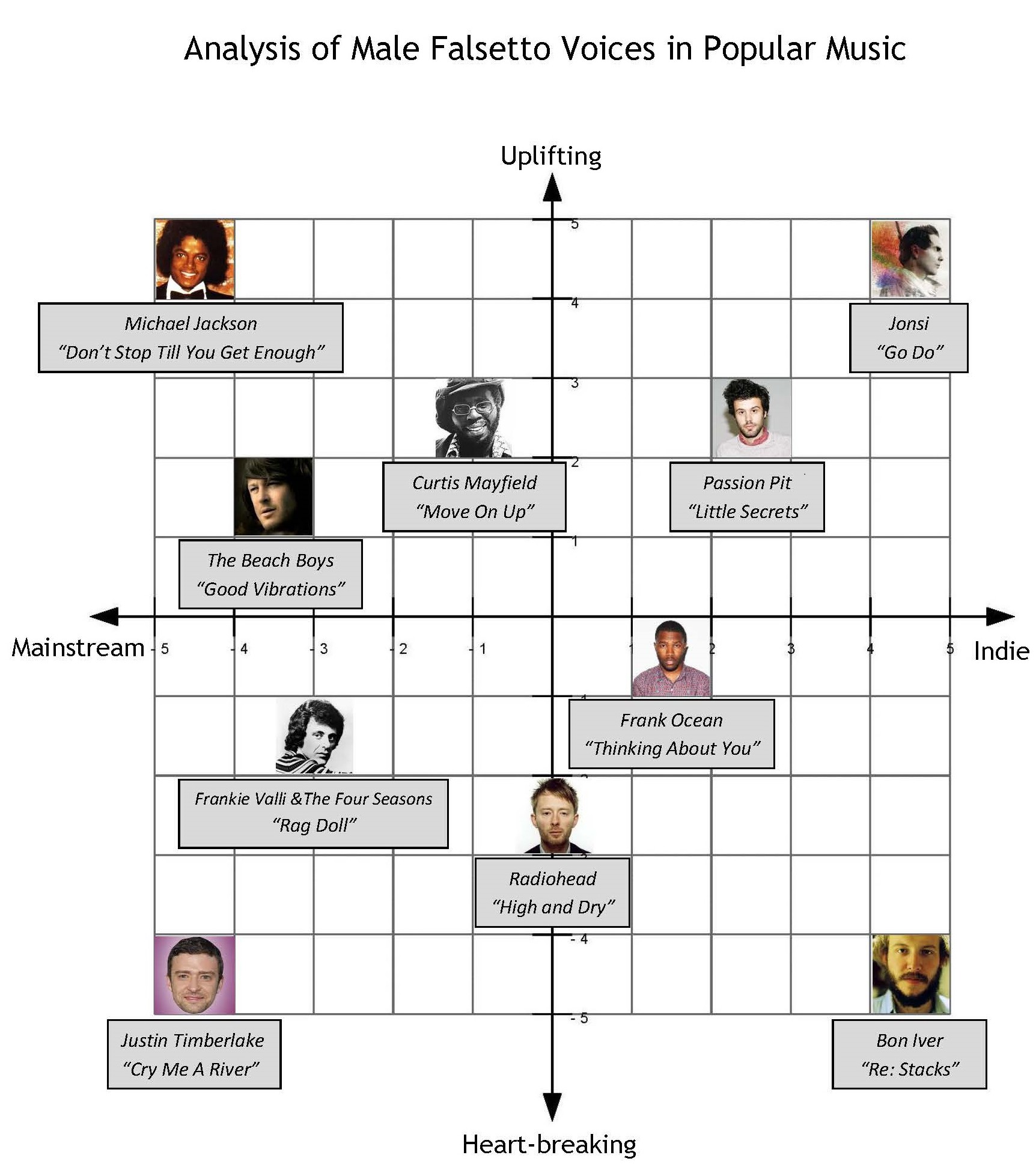I used to think falsetto was for chumps.
This might be because the first time someone explained to me what falsetto was, it was in the context of “In the Jungle”, a song that I found extremely irritating at the time.
But falsetto has a long and proud history in popular music. Over the years, male singers have used their falsetto voices in a surprisingly varied array of contexts; sometimes to make us dance, sometimes to make us hurt, sometimes to make us kiss. In fact, the more I thought about it, the more I realized that the high-pitched male voice is a tool used across the spectrum of popular music. Then I felt an uncontrollably nerdy urge to make a graph to illustrate the point. Here it is:
So, having spent a mildly embarrassing amount of time making the graph above, I invite you to enjoy what has now been (scientifically?) proven to be the indie-est, heatbreaking-est song of them all.
What makes this a beautiful song:
1. It’s so very indie. And I don’t mean that in a snarky way. I mean that it’s the blueprint for independent music: recorded by one guy in a cabin in the middle of nowhere. Recorded with lo-fi equipment. Recorded with no greater ambitions than a small-scale self-release. Recorded independent of the structure and expectations of the music industry.
2. It’s so very heartbreaking. Justin Vernon was fresh off a break-up and the dissolution of his previous band when he wrote this, and it shows; “This my excavation…this is pouring rain, this is paralyzed.”
3. The vocals and the guitar are each recorded twice, one panned left and the other panned right. It gives the impression of someone singing in front of a mirror, the only audience he can find.
Recommended listening activity:
Looking longingly out a coffee shop window.

